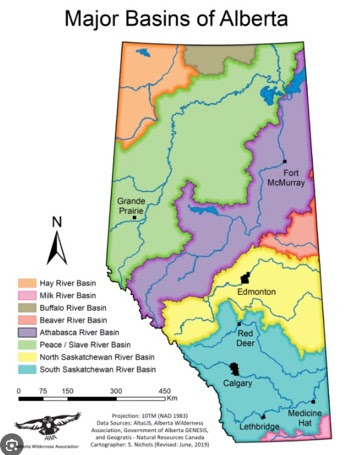I always look forward to the all day seminar that Phil Rowley puts on for our club. Today was the 6th Saturday workshop that Phil has put on for us. The gym was full with 25 avid fly tyers and Phil challenged us to master tying with dubbing loops, using a magic tool and making our own dubbing brushes. Our gang is certainly developing into proficient fly tyers. The 10 patterns they worked on today certainly helped to expand their tying skills and confidence at the vice.
Why Dubbing Loops?
*Durability
*Translucency
*Reinforce & control brittle materials
*Manage thick stemmed feathers
*Combine dissimilar materials
*Divide tails
Phil is an outstanding instructor. The day flew by and the smiles on the faces of our gang was a testament to their success and what they learned.
Thanks Phil for another educational day.
Just a reminder that we do have fly tying this Monday night. Roy Saunders is our guest instructor. See You then! We are down to the final three tying sessions of the year.
Phil Rowley
 |
Fly Craft Fullback-Flashback
Hook: Mustad S82
3906B #12-#8
Thread: Black or Olive
Tail: Pheasant Tail
Rib: Fine Copper Wire
Body:
Arizona Synthetic Peacock, Ice Dub or Peacock Herl
Wingcase:
Pheasant Tail Topped with Mirage Opal Mylar
Thorax: Arizona Synthetic Peacock, Ice Dub
or Peacock Herl
Legs:
Partridge or Indian Hen Back
Poly Spinner
Hook: Mustad
R50-94840 #12-#16
Thread: Color to Match
Tail: Microfibbets
Body:
Dry Fly Dubbing
Wings: Poly Yarn
Combining Different Materials Together
*Dubbing loops can be used to combine different
materials such as dubbing and Crystal Chenille together
*Dubbing loop must always be at least 1.5 inches
shorter than chenille
*Cal Bird style or crochet hook dubbing tool
*Load loop then bring chenille down parallel and spin
tight
Dubbed Girdle Bug
Hook: Mustad
R74-9762 #6-#10 Weighted
Thread: Color to Compliment Body
Tail: Superfloss
Body:
Dubbing Spun Together with Crystal Chenille
Legs: Superfloss
Antenna: Superfloss
Grizzly Dragon
Hook: Mustad R74-9672
#6-#8
Underbody: 7/8 Slim foam
body, tan or black
Body: Grizzly
marabou, trimmed to shape
Wing Case: Scud
Back, Olive, ¼”
Legs: Stretch Floss, mottled
with a permanent marker
Head: Arizona Synthetic Peacock
Eyes: Booby Eye
Body Foam, black
CDC Scud
Hook: Mustad C49S
#10-#14
Thread: Olive
Rib: Fine copper or gold wire
Body: Dubbed mixture CDC and
Light Olive Diamond dubbing
Shellback: Olive Scud Back, 1/8” wide
CDC-A Primer
*CDC or Cul De Canard
*Feathers located around preen gland of water fowl
*Ducks and geese most popular sources
*Buoyant, gathers air bubbles
*Excellent material for both dry and wet flies
*Material gains its buoyant air trapping qualities from
individual barbs not oil
CDC Caddis Pupa
Hook: Mustad C49S
#8-#14
Thread: UTC 70 olive or
brown
Body: CDC
Thorax: CDC
Hackle: Partridge or Mottled Hen
Reinforcing Herl
*Dubbing loops can reinforce peacock herl, ostrich herl even pheasant
tail
*Use thread or wire dubbing loops
*Dubbing loop must always be at least 1.5 inches
shorter herl
*Cal Bird style or crochet hook dubbing tool
*Don’t twist tight at first
*Spin a few times, wind forward, spin again, wind
forward etc.
Here is a short video of Phil showing how to reinforce peacock herl.
Bullet Proof Prince
Hook: Mustad S82
3906B #12-#8
Thread: Black or Olive
Tail: Brown Goose Biots
Rib: Fine Gold or Copper Wire
Body:
Peacock Herl
Legs:
Partridge or Indian Hen Back
Wings:
White Goose Biots
Dubbing Brushes
*Wire based dubbing brushes are strong and easy to
produce
*Easy to pre make quantities of dubbing brushes for a
variety of uses
*Use soft copper wire
*Can be made by hand or by using a dubbing block or
machine
Training Coarse Dubbing
*Heat cup or glass to boiling point
*Saturate fly in hot water for a few seconds
*Stroke fibers back so they flow
*Set fly aside to dry
Ruby Eyed Leech
Hook: Mustad
R74-9762 #6-#10
Thread: Color to Compliment Body
Tail: Dubbing Fibres
Body:
Arizona Simi-Seal Dubbing Brush
Bead:
Red Glass
Head:
Copper or Gold Cone
Controlling & Dubbing Brittle Materials
*Aftershaft are the soft, brittle secondary feathers attached to
main body feathers
*Best sources include pheasant rump and grizzly marabou
*Aftershaft feathers can be used to form mobile bodies and
thoraxes
*Dubbing loops do an excellent job controlling fragile
materials such as aftershaft feathers
*Use dubbing wax to hold materials in position
*Form dubbing loop around materials
Aftershaft
Leech
Hook: Mustad
R74-9762 #6-#10
Thread: Color to Compliment Body
Tail: Marabou
Body:
Aftershaft Feathers
Hackle: Pheasant Rump
Popsicle Leech
Hook: Mustad
R74-9672 #2-#8
Thread: Color
to compliment marabou color
Tail: Marabou
mixed with a few strands of Flashabou
Hackle: Polar
Chenille
Body: Crystal
Chenille, color to compliment marabou color
Collar: Strung Marabou
Bead: Copper,
gold or hot orange cone
























No comments:
Post a Comment